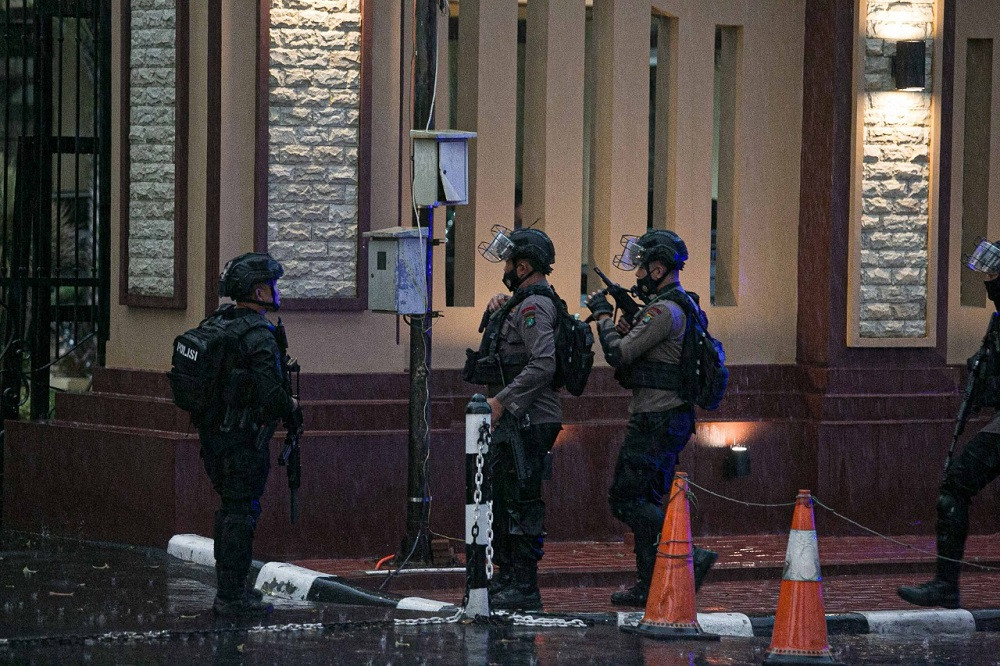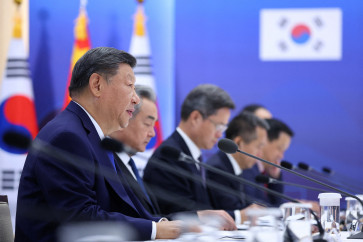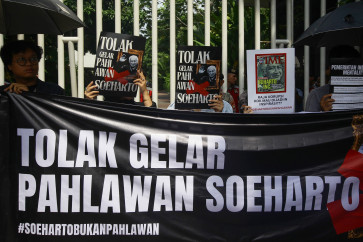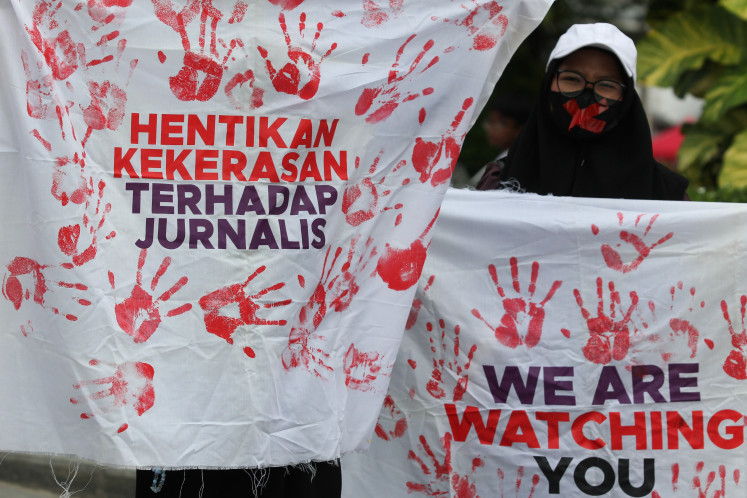Popular Reads
Top Results
Can't find what you're looking for?
View all search resultsPopular Reads
Top Results
Can't find what you're looking for?
View all search resultsBreaking the chain of online radicalization
It is possible that ZA committed her “suicide” attack because she was exposed to materials glorifying other suicide attackers.
Change text size
Gift Premium Articles
to Anyone
O
n March 31, a gun-brandishing 25-year-old woman — identified only as ZA — walked into the National Police headquarters in South Jakarta and threatened to shoot officers. In a matter of minutes, she was shot dead. It is believed she acted alone and was not connected to any known terrorist network.
But she left a note which suggested she was following the violent extremist ideology of the Islamic State (IS) movement. The lack of connections to existing networks, the tone and content of her farewell letter and initial police information about her social media use suggest the strong possibility that she was self-radicalized by exposure to extremist materials on the internet. Extremist materials on social media likely played an important part in forming her worldview.
Articles or materials on extremist thinking are accessible on a wide range of platforms – including websites and personal blogs. But social media has the greatest influence because people can find and directly connect with others who share and support their extremist views.
It is possible that ZA committed her “suicide” attack because she was exposed to materials glorifying other suicide attackers, such as those recently in Makassar, South Sulawesi, and elsewhere, on the social media networks of which she was part.
The phenomenon of “instant radicalization” characterized by social media actually has its roots in al-Qaeda's (AQ) early use of the internet to spread its “global jihadist” ideology. AQ sought to promote this ideology as part of its long-term strategy to wage war on the United States and its allies. It needed the presence and support of extremist groups across the globe to establish itself as a popular movement throughout the Islamic world.
I and my friends, at the time, were among those impressed by AQ's concept of global jihad. We believed that globalizing jihad was a good approach: whatever we did at the local level would contribute to the broader global jihadist movement initiated by AQ. As a result, every directive and propaganda release from AQ became a reference for us in determining our own actions.
But strategy is essentially theoretical. Actors are forced to adapt and change their approach when the theory does not align with realities in the field. Or, in order to adapt to the changing conditions, improvisation is needed. This improvisation opened up the possibility that groups would diverge from the planned global strategy.
Improvisation also highlighted the greatest weakness of the global jihadist movement: its weak control over new, small groups formed in support of the jihadist goal. Even though they shared common ideas and were part of the same broad movement, differences would emerge depending on where these groups were operating. It was these differences which forced groups in various countries to improvise.
When changes needed to be made to the strategy to suit local conditions, AQ's control over strategy weakened, because it did not understand the challenges facing each jihadist group. It could only advise and direct but had little scope for intervention. When some groups went too far with their improvisation, they would declare themselves independent from AQ.
The best example of this is the IS movement. In the beginning, IS was AQ's branch in Iraq. But as time passed by it was forced to improvise, particularly in recruiting new members and appointing new leaders. This provided a space for a new cohort of takfirist (extremists who declared all Muslims outside their group infidels and apostates) to enter IS' ranks. These takfirists played a significant role in developing IS into the group that it is today.
Indonesia's jihadists followed a similar trajectory. At the beginning of the “jihadist experiment” in Indonesia, extremists followed the AQ-led “global jihad”, which targeted the US, Jewish interests and their allies. The first Bali bombing (2002), second Bali bombing (2005), JW Marriott bombing (2003), Australian Embassy bombing (2004) and Marriott-Ritz Carlton bombings (2009) all targeted foreigners, who were linked with the US.
Gradually, this focus shifted due to the limited capabilities of these groups and the difficulties they faced in the field. As far as I am aware, the majority of leaders, members and supporters of Indonesia's largest terrorist group, Jamaah Islamiyah (JI), realized the fallacy of the global jihadist ijtihad (approach). Many JI operatives were arrested and the attacks they perpetrated had little impact. As a result, JI members focused on promoting an approach of adapting to local conditions in Indonesia and working together with other elements of the Muslim community.
For JI followers who backed the “revolutionary ijtihad” of the Bali bombers, the move by JI to take a more passive approach and collaborate with other Muslim groups was seen as a setback. The Bali bombers' devotees — myself included at the time — did not see any sense in JI's new approach: just as the global jihad was beginning to take off, JI was seeking to withdraw.
As JI moved away from violence, some extremists doubled down and sought to take advantage of new technologies to promote their worldview. The development of online jihadism was one of the most important legacies of the Bali bombers and the cells led by Noordin M. Top (responsible for the 2009 Marriott-Ritz Carlton bombings) that succeeded them. They planted the seeds for the growth of online radicalization through their work teaching “forbidden knowledge” on jihadist web forums.
Through web forums, these online extremists disseminated articles from some of the foremost global terrorist leaders outlining jihadist thought. This “forbidden knowledge” also covered paramilitary topics such as field engineering (dealing with explosives). These materials combined to strengthen the capability and determination of those inspired by AQ's global jihad.
But the greatest impact on online radicalization and a shift in the nature of the extremist movement in Indonesia was the dissemination of Aman Abdurrahman's works on Islamic theology. Aman, who had made a name for himself as an upcoming talented preacher with a powerful command of Arabic, tended to take a more extreme interpretation of religious precepts than even JI members.
Why was Aman's work so influential? His thinking tapped into the strong desire from some local extremists to wage jihad in Indonesia and compelled them to seek out new ways to engage with the global jihad. For this, they needed three things: personnel, funding and easy targets. This was where Aman's articles and sermons came into play as a key set of materials with which to recruit new followers — who could provide resources as well as their own energy to the cause — and as a reference for determining which enemies to focus on.
His discussions on Islamic theology encouraged his followers to reject the Indonesian political, social and cultural system, which he denounced as a thagut (oppressive and un-Islamic) system. This ran counter to JI's approach, which was to encourage its followers to retain their faith in trying times and discussing more mundane doctrinal and behavioral issues.
***
The writer is a repented terrorist, the author of Internetistan and a contributor to Ruangobrol.id. This is the first part of a series.










